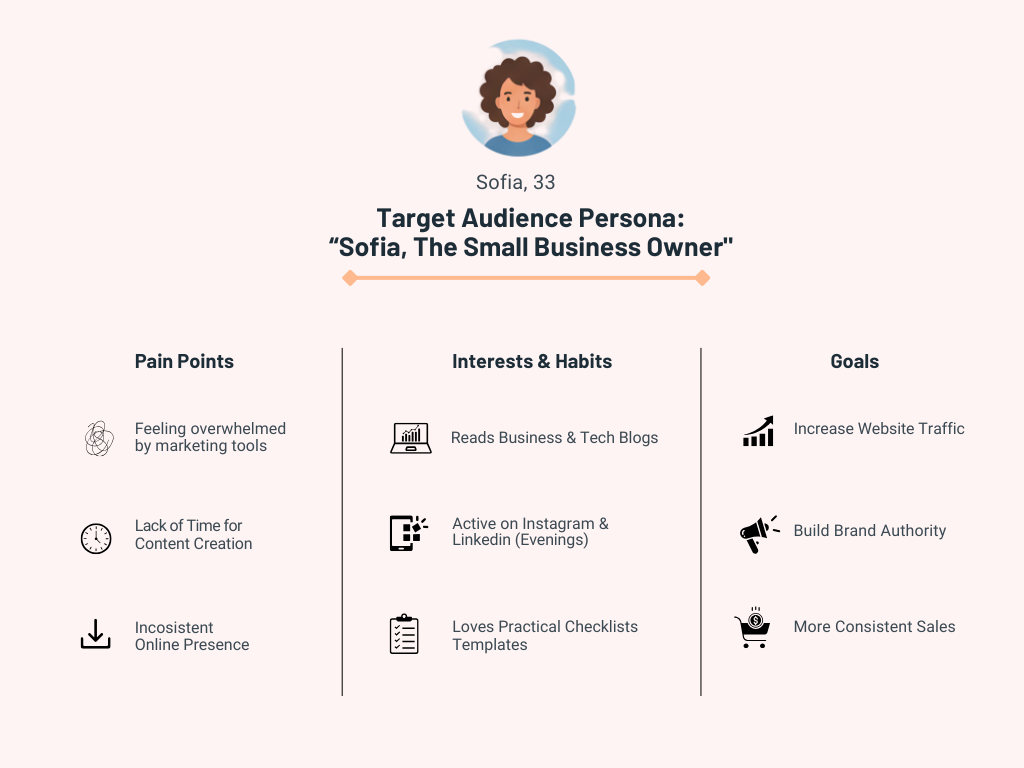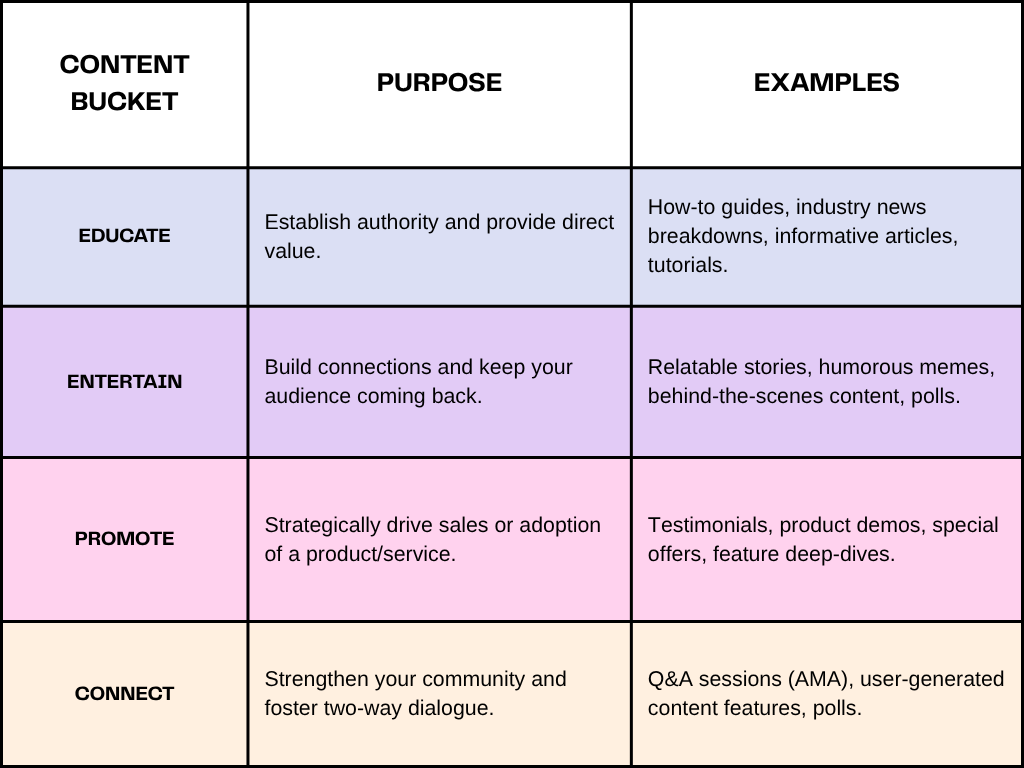How to Create a Content Calendar That Actually Works
Most creators are stuck in an endless cycle of last-minute scrambling, wondering what to post next while watching their engagement slowly decline.If you find yourself in this situation, you’re not alone.
Having a systematic and organised approach to content creation is crucial for growing your audience, enhancing your online presence, and, most importantly, saving your sanity. The truth is, consistency matters more than inspiration when it comes to content. That is where having a content calendar comes in handy.
In this guide, we'll explore how to design a monthly content calendar that keeps your marketing efforts on track. Each week will have specific objectives, from posting educational content that informs your audience to engaging entertainment that keeps them coming back for more. We’ll delve into planning, creating, and scheduling your content effectively. By the end, you’ll be well-equipped to improve your content strategy and engage your audience effectively.
Step 1: Define Your Goals
Before you start filling up your calendar, it is essential to ask yourself these questions:
- What do I want my content to achieve?
- Who am I trying to reach?
- How will I measure success?
Establishing clear, measurable goals is the foundation that will inform the type of content you create and your entire posting schedule.
Be SMART
Use the SMART framework (Specific, Measurable, Achievable, Relevant, Time-bound).
Link Content to Business
Are you focusing on brand awareness (reach, impressions), lead generation (email sign-ups, downloads), or driving sales/traffic (conversions, clicks)?
Example Goal: Increase monthly traffic to your blog by 25% within the next quarter (3 months) through a commitment to posting 8 SEO-optimised articles per month.
Step 2 : Get to Know Your Audience (The Persona Map)
Content is only effective if it resonates. Knowing your audience is the absolute backbone of a successful content calendar. Don't just rely on general demographics; create detailed content personas that act as a map for your creative direction.
Practical Action:
- Identify Pain Points: What problems are they trying to solve? Your content should offer solutions.
- Track Interests & Media Habits: What websites do they read? What time of day are they most active on social media? Use platform analytics to figure this out.
- Map the Buyer's Journey: Understand what type of content they need at the Awareness stage (educational articles), the Consideration stage (product comparisons, case studies), and the Decision stage (testimonials, free trials).

The more you understand your audience, the better you'll be able to develop content that resonates with them, sparking engagement and interaction.
Step 3: Identify Content Types
To maintain high engagement and avoid audience fatigue, your content calendar must encompass different types of posts that serve various purposes. Think of these as your content buckets.

Pro Tip: Aim for an 80/20 rule. 80% of your content should educate, entertain, or connect, while a maximum of 20% should overtly promote.

Step 4: Conduct a Strategic Content Audit
You don’t need to reinvent the wheel every month. Reviewing your existing content can yield valuable, data-driven insights - helping you work smarter, not just harder.
What to Analyse:
- High-Performers: Which posts generated the most engagement (likes, comments, shares)? Which drove the most traffic or conversions? This highlights themes or formats you should create more of.
- Gaps & Opportunities: Are you missing content for a critical pain point your audience has? Is there a content type (like video) you haven't tried but your competitors are excelling at?
- Content Recycling: Can you turn a high-performing blog post into 5 social media graphics, a short video script, and an email newsletter? Repurposing is key to consistency.
Step 5: Build a Flow, Not Just a Calendar
This is where you move from strategy to execution. The goal is to build a predictable, repeatable process.
Decide on a Weekly Schedule: One effective approach is to divide your month into sections. For example:
- Week 1: Brainstorm and curate content ideas based on audience research and trending topics.
- Week 2: Create the content, keeping SEO optimisation in mind to attract organic traffic.
- Week 3: Schedule posts using a social media management tool like the CXG Post scheduler to automate sharing on multiple platforms.
- Week 4: Analyse performance and adjust the following month’s calendar based on insights.
Step 6: Embrace Flexibility for Trending Topics
Trends move quickly in the digital space. Staying flexible allows you to adapt your content calendar to include timely topics, thus enhancing relevance and engagement. Designate open slots in your calendar for breaking news or viral trends that your audience might be interested in.
This small amount of flexibility keeps your brand relevant and dynamic.
Step 7: Review and Optimise Your Calendar
The final step is to take a step back and let the data talk. Your content calendar should be a dynamic and adaptable tool that evolves with your strategy, rather than a fixed plan that cannot be changed.
- Establish a Monthly Check-in: Dedicate time at the end of Week 4 to formally compare your post analytics against your original goals from Step 1.
- Ask the Hard Questions: Are we meeting the traffic goal? Is the Promote bucket generating sales or just annoying people? Which platform gave us the best ROI this month?
- Tweak Your Strategy: If video is outperforming images by 300%, shift resources from image creation to video creation for next month.
Final Thoughts: Why a Content Calendar Matters
A well-organised content calendar can significantly ease the strain of content creation. Not only does it streamline your tasks, but it also provides clarity on your marketing strategy. By developing a structured plan, you position yourself for greater success and consistency in your efforts.
Taking the time to implement these strategies pays off by allowing you to produce compelling content that organically attracts and retains your audience’s attention.The key to great content marketing is consistency. So begin planning your calendar today!
Ready to start? Try our free content calendar tool and see how much smoother your process can be





